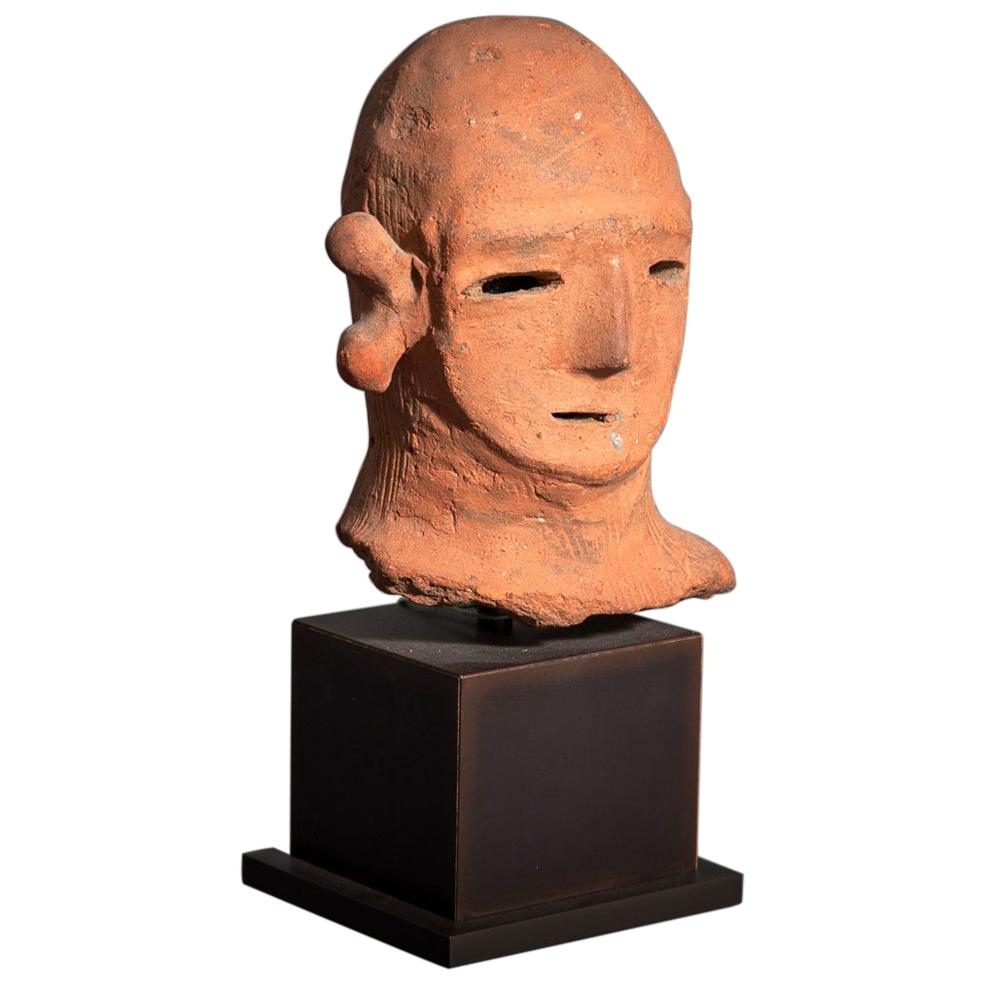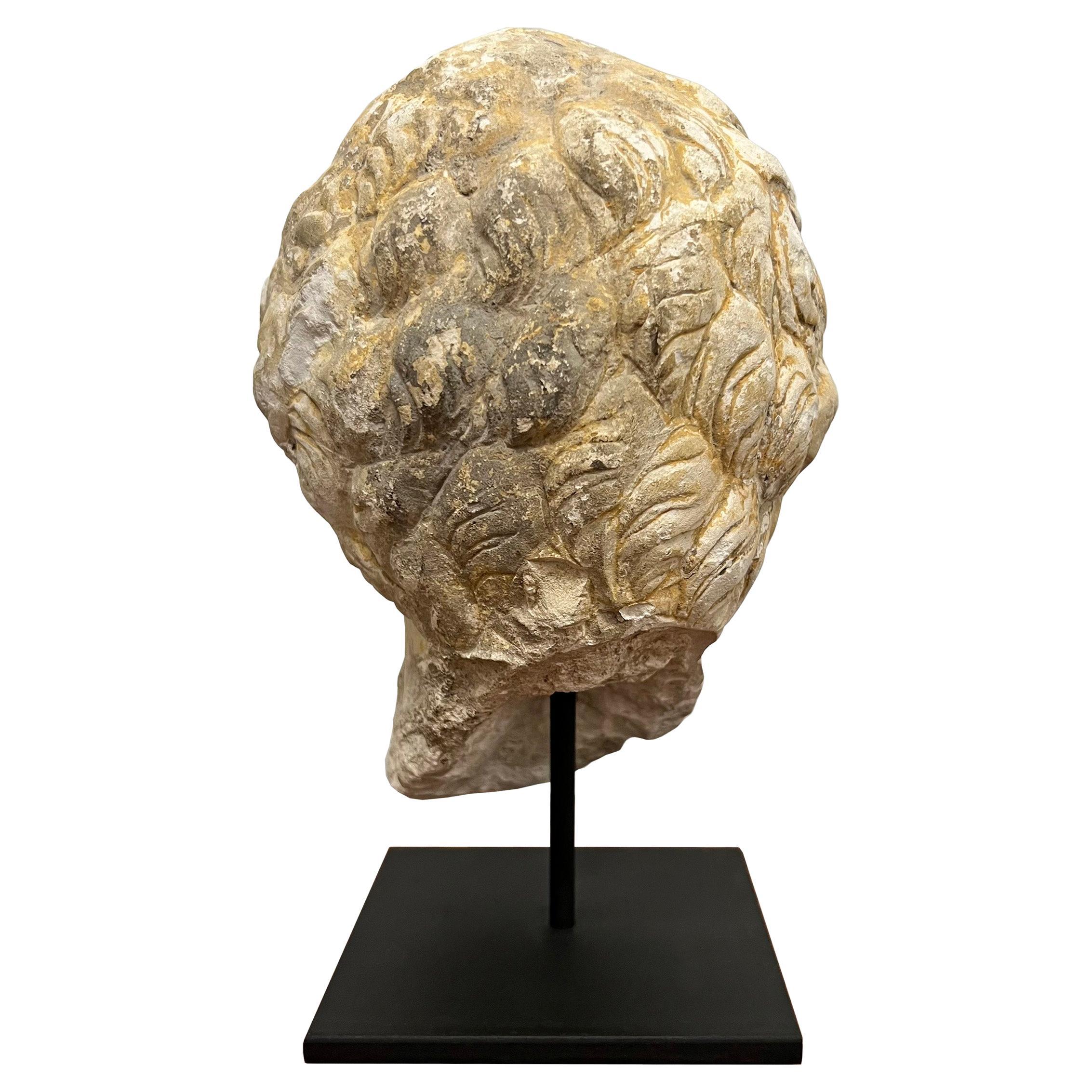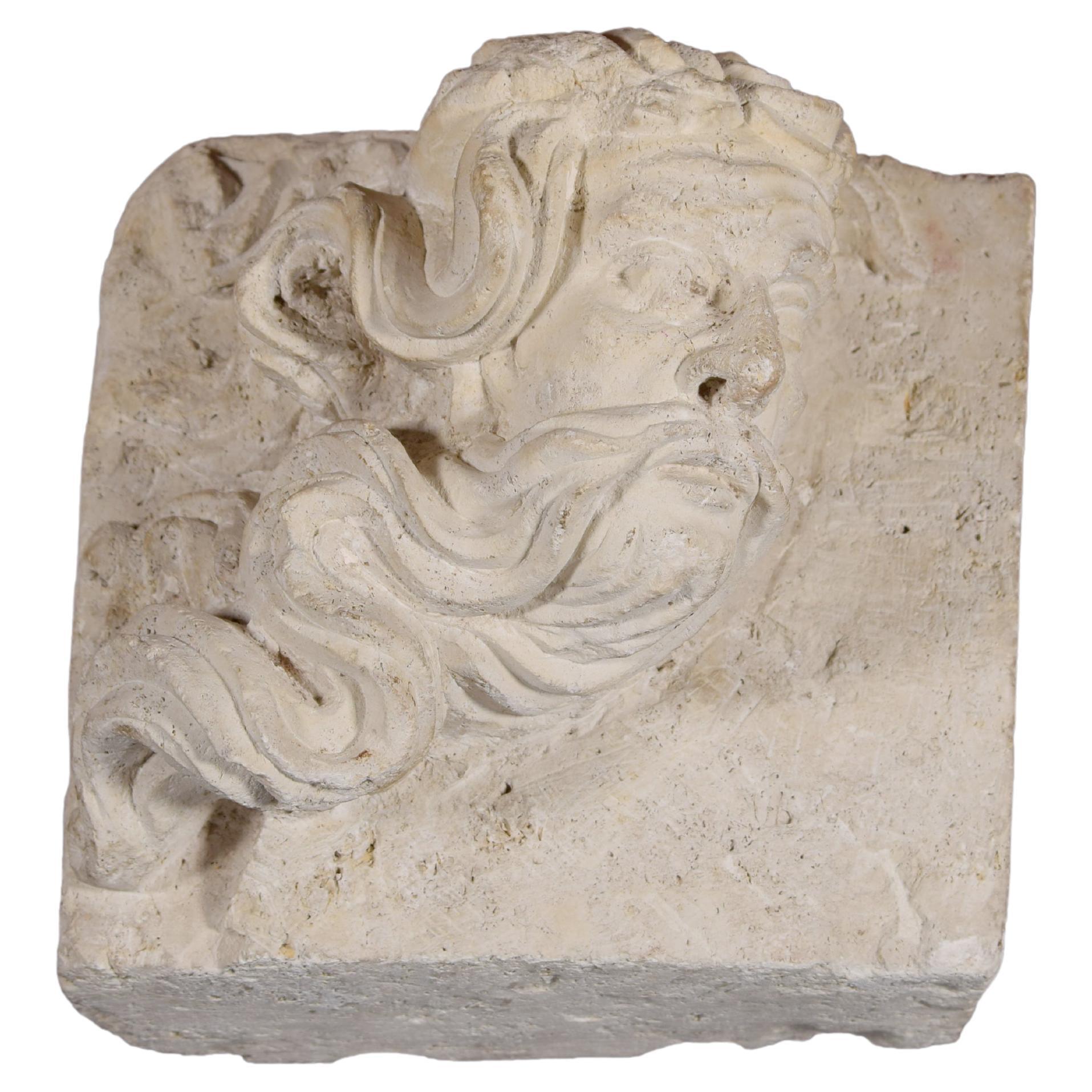Items Similar to European Carved Limestone Celtic Votive Head of a Male Warrior
Want more images or videos?
Request additional images or videos from the seller
1 of 9
European Carved Limestone Celtic Votive Head of a Male Warrior
About the Item
A Large European Carved Limestone Celtic Votive Head of a Male Warrior Wearing a Typical Flowing Moustache Small Beard and Curling Locks of Hair Stiffened with Lime Wash the Slit Mouth Open as if in Command
Circa 1st Century BC - 1st Century AD
Size: 31cm high, 22cm wide, 25cm deep - 12¼ ins high, 8¾ ins wide, 9¾ ins deep / 42cm high - 16½ ins high (with base)
From about 500 BC, first Greek and later Roman historians mention peoples living in a large area of non-mediterranean Europe as Celts. These classical chroniclers seem to have recognised these communities as having sufficient shared cultural traditions to justify their being given a common name, ‘Keltoi’ by the Greeks, and ‘Celtae’ or ‘Galli’ by the Romans. The earliest allusions to Celts by such Greek historians as Herodotus (485 - 425 BC) were followed by Polybius (200 - 118 BC) and Livy (59 BC - AD 17) who discuss the expansion of the Celts from their central European homelands during the 4th and 3rd centuries BC. They document the presence of Celts in Spain, France, Italy, Greece and Asia Minor, specifically central Turkey. They testify to the successful Roman resistance to the Celts in Italy, after the ignominy of the sacking of Rome by them in 387 BC, and describe the huge defeat suffered by the Celts at the battle of Telemon in northern Italy in 225 BC. The Celts in Greece who sacked the sacred site of Delphi in 279 BC were defeated by King Antigonos Gonatas of Macedon in 278 - 277 BC and in Turkey by Altalus of Pergamon in 240 BC. The Celts in Spain fell under the shadow of Rome from 2nd Century BC and the Celtic heartland known by the Romans as ‘Gaul’ was conquered by the Romans under Julius Caesar in the mid 1st Century BC. Britain was not referred to as Celtic by the ancient historians, but Caesar recognised the close similarities between Britain and Gaul especially in their political organisation. Tacitus (55 - 120 AD) and others chronicled the conquest of Britain between 43 and 84 AD some mentioning the fierce nature of the Celts who went into battle naked.
Celtic art therefore belongs to an artistic tradition in the early history of Europe which is no less important than that of the classical world. Art was central to Celtic identity and was closely related to the objects which it decorated. The Celts were used to seeing art as an integral part of their everyday lives.
Provenance:
Ex Finch and Co
Ex Private collection
- Dimensions:Height: 12.25 in (31.12 cm)Width: 8.75 in (22.23 cm)Depth: 9.75 in (24.77 cm)
- Materials and Techniques:
- Place of Origin:
- Period:
- Date of Manufacture:Circa 1st Century BC - 1st Century AD
- Condition:Wear consistent with age and use.
- Seller Location:London, GB
- Reference Number:1stDibs: LU9363239343922
About the Seller
No Reviews Yet
Vetted Seller
These experienced sellers undergo a comprehensive evaluation by our team of in-house experts.
Established in 1989
1stDibs seller since 2023
- ShippingRetrieving quote...Ships From: London, United Kingdom
- Return PolicyA return for this item may be initiated within 14 days of delivery.
More From This SellerView All
- A Superb Pair of Neapolitan Carved Figures of DwarvesBy Francesco CelebranoLocated in London, GBA Superb Pair of Neapolitan Carved Figures of Dwarves Attributed to Francesco Celebrano (1729 - 1814) Marble Naples, Italy 18th Century SIZE: Male: 36cm high - 14¼ ins high Fe...Category
Antique Late 18th Century Italian Figurative Sculptures
MaterialsMarble
- A Fine Flemish Carved Figure of a ManLocated in London, GBA Fine Flemish Carved Figure of a Man Attributed to Henrick Douverman (c. 1480 - 1543) (sometimes known as Heinrich Douwermann) Wood (oak) Flemish Early 16th Century SIZE: 28cm high...Category
Antique 16th Century Dutch Figurative Sculptures
MaterialsWood
- A Finely Carved Gandhara Head of ‘Atlas’Located in London, GBA Finely Carved Gandhara Head of ‘Atlas’ Grey schist India 3rd - 4th Centuries AD SIZE: 19cm high, 11cm wide, 12.5cm deep - 7½ ins high, 4¼ ins wide, 5 ins deep References Pratap...Category
Antique 15th Century and Earlier Indian Antiquities
MaterialsSchist
- An Over Life-Size Powerful Roman Male Portrait Head of Constantine the GreatLocated in London, GBAn Over Life-Size Powerful Roman Male Portrait Head of Constantine the Great (c.272 - 337) Wearing the ‘Imperial Oak Wreath’ the decorative border of his ‘tunic’ can still be clearly seen on the left hand side Marble Italy Early 4th Century AD SIZE: 38cm high, 24.5cm wide, 25cm deep - 15cm high, 9¾ ins wide, 10 ins deep PROVENANCE: Ex Private collection, Cambridge, England note: For a very similar over life-size portrait head of Constantine I (the Great) wearing an identical wreath dating from the early 4th century AD see: Yorkshire Museum, York, inv. no. ‘YORYM’ 1998.23. Found in ‘Eboracum’ (York) in 1823 LITERATURE: Rinaldi Tufi, S., Yorkshire. ‘Corpus Signorum Imperii Romani (Great Britain)’; vol. 1, fasc. 3, Yorkshire. Oxford University Press, 1983; 23, no. 38, pl. 12 In AD 306, Constantine was hailed emperor in the Roman city of York; he was the first emperor to convert to Christianity. Born in Naissus, the son of Flavius Constantius, and Helena, a woman of low birth and a christian. Following his campaigns in the eastern provinces, Constantine was recalled in 305 AD to fight alongside his father in the province of Britannia. After his father’s death in 306 AD, Constantine was acclaimed as ‘imperator’ by his army at Eboracum (York) eventually being declared victorious after the civil wars against emperors, Maxentius and Licinius to become sole ruler of the Roman Empire in 324 AD. Constantine’s Christian belief cannot be underestimated, establishing the foundations of ‘Western Christendom’. In 313 AD he was influential in the proclamation of the ‘Edict of Milan, declaring tolerance of Christianity within the Roman Empire. The Church of the Holy Sepulchre, the purported site of Jesus’s tomb...Category
Antique 15th Century and Earlier Italian Classical Roman Antiquities
MaterialsMarble
- A Hellenistic Funerary Stele in High Relief with Two Male HeadsLocated in London, GBA Hellenistic Funerary Stele in High Relief with Two Male Heads Marble Greek Hellenistic Circa 2nd Century BC Size: 20.5cm high, 38cm wide, 11cm deep - 8 ins high, 15 ins wide, 4...Category
Antique 15th Century and Earlier Greek Antiquities
MaterialsMarble
- An Unusual and Rare English ‘Memento Mori’ Carved Shrine with Two Human SkullsLocated in London, GBAn Unusual and Rare English ‘Memento Mori’ Carved Shrine with Two Human Skulls to the underside, a carved ‘Dragonfly’ Marble 16th / 17th Century England Size: 36cm high, 28cm w...Category
Antique 16th Century English Figurative Sculptures
MaterialsMarble
You May Also Like
- Pair of Carved Limestone Heads from a Building FacadeLocated in Chicago, ILPair of carved limestone heads from a Chicago Hospital. Heads depict ancient medical practitioners. Custom iron mounts are recently made.Category
Vintage 1920s American Figurative Sculptures
MaterialsLimestone, Metal
- Antique Carved Wood Head Of A Male Mounted On PanelLocated in Bridgeport, CTA well carved hardwood bust reminiscent of sacred and religious sculpture of the Gothic and Renaissance eras. Antique carved wood head of a mal...Category
Antique 19th Century Renaissance Busts
MaterialsHardwood
- Japanese Haniwa Terracotta Head of a WarriorLocated in Hudson, NYJapanese Haniwa terracotta head of a warrior, Haniwa figures are Japanese terracotta funerary figures that accompanied the dead buried in early Japan, ...Category
Antique 15th Century and Earlier Japanese Antiquities
MaterialsTerracotta
- 15th Century French Carved Limestone Head FragmentLocated in Chicago, ILAn incredible and rare 15th century French carved limestone fragment depicting the back of a man's head with a wavy hair texture, and mounted on a c...Category
Antique 15th Century and Earlier French Renaissance Mounted Objects
MaterialsMarble
- Male Head, Carved Stone, Spain, 16th CenturyLocated in Madrid, ESMale head. Carved stone. Century XVI. Carved stone relief showing a male face turned to the right. It is necessary to highlight both the quality of the fac...Category
Antique 16th Century Spanish Renaissance Decorative Art
MaterialsStone
- Chinese Carved Limestone Head of the Buddha, Mid-20th CenturyLocated in Austin, TXA sensitively carved limestone monumental head of the Buddha, China, mid-20th century. The large carved limestone head displays a quiet sensuousness typical of the Northern Qi style, and follows Northern Qi stylistic conventions, with an oval shaped head covered in pinwheel shaped curls. His full lips...Category
Mid-20th Century Chinese Busts
MaterialsLimestone





